The look on my face must have been one of utter confusion as Hardy Ruf explained to me that I’d be standing thigh-deep in a high-country lake and, if the light was right, I’d be sight-casting to big lake trout not 20 feet from me.
“You don’t believe me, do you?” Hardy asked. What was I to say? Lake trout, in the mind of a lifelong American angler, are deep-water char — denizens that live 100 feet below the surface, only coming into the shallows in the spring when the ice comes off and again in the fall, when it’s time to spawn. But in August? What’s this guy smoking? I told the proprietor of Dalton Trail Lodge exactly what I thought.
“No,” I said. “I’ll need to see this to believe it.”
Not two hours later, Marek Brudny, a Czech ex-pat who lives and guides in western Canada, stood next to me, the waters of Mush Lake tickling my shins, as I pulled in the first of several lake trout on the day. I was floored as the 22-inch char came to the net.
“This doesn’t make any sense,” I said, admiring the buttery colors on the pre-spawn fish. This char was actually the second fish to hit my streamer on the retrieve — the first fish was quite a bit bigger, but it came unhooked after a quick fight. But before I could lift the fly and recast it over the edge of a drop-off, where Marek said the fish would gather to feast on the lake’s healthy population of grayling and whitefish, the second hungry laker nailed the fly.
But I had my proof. Turns out, Hardy wasn’t smoking anything, after all. He was right. Lake trout in the shallows.
“I’ll be damned,” I said as Marek held the stunning fish up for a quick photo. His smile was as big as mine.
And it wasn’t unique to this particular lake, that got its name thanks to a group of Klondike explorers who became stranded on its banks in the midst of an early season snow storm during the gold rush days in the late 1800s — the group was forced to exist on oatmeal mush for days before they could be rescued. All throughout this remote corner of the Yukon, lake trout come to hand from shallow water all season long, culminating in an in-earnest spawning run up tributary streams where they can be as thick as salmon and just as ornery.

The lakes in the region, which centers around Kluane National Park near the community of Haines Junction, are generally shallow, and the big lakers seek out cold-water inflows from the many glacier- and snowmelt-fed creeks and streams in the area, regardless of the time of year. On Dezadeash Lake (pronounced Dez-uh-DEE-ash), the big char gather around the creek inlets starting in June, and the Yukon Fish and Game Association actually closes the lake to lake-trout fishing in July and into August near the inlets to protect the native char.
Later that first morning, Marek and I motored across Mush Lake in one of the lodge’s skiffs and then portaged via canoe through a narrow river channel that connects Mush Lake with Bates Lake. These lakes, giant potholes surrounded by craggy, snow-spattered peaks, are within the national park and the human footprint is tiny.
Once we got to Bates Lake, we walked in moose and wolf prints on the beach to another stream inlet. Again, wading out to about knee level, we cast to a group of lake trout that had surrounded a school of feisty Arctic grayling. The action was fast, and the fish, with their mottled patterns of olive and bronze, were big and beautiful. Spawning season was approaching, and some of the big char sported deep orange bellies and creamy, white fin tips. And again, they came to hand in shallow water — no need for heavy sinking lines or unwieldy shooting heads. It was great fun, casting big articulated streamers into the fray and watching as the big fish fought over the fly on the retrieve.
And yes, Hardy, I believe you now.

More than just lake trout
My first full day in the Yukon was spent driving the Alaska Highway between White Horse, the biggest city in the territory (and a great place to spend a couple of days taking in the native history and getting to know more about the Klondike and the gold rush days of a bygone era) and Dalton Trail Lodge south of Haines Junction. I could have made the drive in a little over an hour, but in typical tourist fashion, I took my time, stopped a lot to take photos and found a little stream that literally burst with enthusiastic grayling.
Arctic grayling are the far north’s answer to backcountry cutthroat trout. They’re plentiful. They’ll eat anything that looks like it should be eaten. And they’re not super bright. If you ever find yourself in a fly-fishing funk, and everything seems to be falling apart, from your cast to your knots, find some grayling. They’ll cure all your angling ills and get your head back on the right axis. Yes, it might require a change in latitude. But sometimes, it’s worth it.
I spent a couple of hours wet-wading under a glorious Yukon summer sky, picking grayling out of obvious fishy lies in a beautiful little stream that runs through the firs and the aspens of the Takhini River Valley. The fish were exactly where they were supposed to be and they were very lively, jumping from the water to attack dry flies and putting up very respectable light-tackle fights. By the end of the afternoon, the little foam hopper I tied on when I started fishing was barely recognizable. And, while grayling are often small in some of these austere sub-Arctic habitats, I did manage to pull a couple of fish from the creek that might have taped in at 15 inches or so — very respectable fish.
When I pulled into Dalton Trail Lodge, I was pleased with the start of the journey north. And, as it turned out, it was only going to get better. I met Hardy, a Swiss ex-pat who’s run the lodge on the shores of Dezadeash Lake for the better part of four decades and is getting ready to hand it off to his kids, who are determined to keep the lodge in the family and continue its stellar reputation. Not only does the lodge provide outfitting for anglers, it’s also a jumping off point for off-road vehicle treks, hiking, helicopter tours, gold panning (it is the Klondike!) and boat tours in the national park. The “Kluane Country” is visually breathtaking — high peaks tickle the clouds and verdant green valleys are sliced by glacial rivers that collect in stunning, blue-water lakes. It’s sensory overload at its finest.
But, of course, I was there for the fishing, and Hardy was quick to get me checked into my cabin and familiarized with the lodge property.

“If you want to fish before dinner, just take this trail about a quarter of a mile, and you’ll run into Beaver Creek,” he said, pointing to a little two-track that led off into the woods near my cabin. “There are lots of grayling there. You’ll enjoy it.”
So … I did. I found Beaver Creek and spent a good hour casting to its hungry grayling right where the creek flows into the lake. It was the perfect pre-dinner treat.
A pike anglers paradise
August isn’t the best month for northern pike in the Yukon, but it’s a do-able proposition. Hardy suggested I come back in June if I really wanted to chase trophy pike. Dezadeash Lake and several other valley-floor lakes in the Kluane region are home to populations of big, native pike, and they really shine for fly fishers early in the season and again later in the year once things cool off and the big predators return to the shallows.

Pike might be my favorite fly-rod fish — they hit flies like a freight train and they’ll take big bugs like poppers and gurglers on top. They’re a visual target, too — watching a big pike come out of nowhere and hit a streamer as it approaches the boat is among the most gratifying experiences in all of fly fishing.
And, even though it was the middle of August, there had been some rain and a couple of cooler days. So Hardy humored me, and let Marek guide me on a small, hidden lake about an hour’s drive from the lodge. The little lake tucked deep in the Klondike woods is sheltered from what can be a brutal sub-Arctic wind. We spent the morning casting big streamers over weed beds, searching for northerns. The fishing was steady, but, as Marek predicted, the big pike were still in summer “sulk mode,” glued to the bottom and unwilling to come out and play. That said, we did boat a couple of fish in the mid-30-inch range, and we had about an hour in the afternoon when the fishing was legitimately hot for “lunch fish” — pike right around 30 inches long.
No, we didn’t bag a trophy fish over 40 inches, but it definitely scratched an itch. And June in the Yukon? I’m game to pack my wire leaders and a box full of gurglers. Count me in.
A classic north country lodge
Dalton Trail Lodge is comfortably rustic. It’s a classic log-constructed lodge that boasts a fantastic little tavern, a spacious dining area, a comfortable gathering area and a hidden basement pool hall. The decor is “Northwoods Chic,” featuring the requisite moose and caribou mounts, mounted lake trout and giant pike and grayling. It’s exactly what you’d expect, but … maybe a bit better.
Hardy’s family is invested in Dalton Trail Lodge, and the service is impeccable. Meals are a mix of gourmet and comfort food, served with some good British Columbia wine options. Most North Woods fishing lodges are a bit more traditional with meal service— daily shore lunches featuring the catch of day fried in lard, heavy, meaty dinners meant to replenish anglers after hours in the wind and rain and carefully doled-out booze that’s tough to replenish. At Dalton Trail, though, even as remote as it is, the meals were of the 5-star ilk — carefully prepared, perfectly presented and delicious. I was honestly a bit surprised — having visited a number of Canadian fly-in lodges, I was expecting something simpler. Not so at Dalton Trail.
And, come to think of it, that might be because the lodge isn’t just a fishing lodge. It’s a legit outfitter for everyone seeking some Klondike adventure, whether they fish or not. Granted, most of the visitors at the lodge with me were anglers, but some were more tuned into riding ORVs on a vast network of wilderness trails or simply boarding a skiff and touring the stunning Kathleen Lake that’s fed by a retreating glacier and dozens of small, snow-fed creeks. I’ve always understood the unwritten rules of backcountry fishing lodges — they do the best they can with what they have. But at Dalton Trail, it’s a step above the “traditional.”
But … the fishing
I have a one-track mind when I travel, especially if I’m visiting some place on my own. I want to fish, and I want to fish hard. Marek got that, and he was up for anything.
The day we fished for lake trout on Mush and Bates lakes, we did a portage between the two, traversing a short river channel in a canoe. But this little creek that connects the two big, backcountry lakes was fishy in its own right.
Of course, it boasted a healthy and cooperative grayling population, but it was also a great spot to kind of take in how the food chain works in the Klondike. Grayling might be excellent dry-fly targets, but they’re also food for lake trout. A couple of times, after hooking and fighting nice grayling, I watched as big lakers kind of ghosted out of the depths of the pools to inspect the struggling fish. The second time I noticed it, I swapped the little 4-weight rod I was using for the grayling and started throwing big streamers using a larger 7-weight.
Expecting to hook into the bigger lakers that were lurking in the depths and likely culling the grayling population, I was shocked when the first fish that came to hand on the streamer was a 16-inch grayling. How on earth the overconfident little cousin to the whitefish got its mouth around the size 6 streamer hook remains a mystery, but it’s proof that in cold-water habitats, fish can and do eat whatever they can get. Nevertheless, I couldn’t help but mutter, “What were you thinking?” as I unbuttoned the streamer from the small mouth of the mighty-at-heart grayling.
I did manage to hook into a predatory laker before we had to call it a day and get back to the lodge in time for dinner. That, too, was a bit of a head-scratcher for me— lake trout in a real river channel. The Yukon is full of surprises.
My last morning at the lodge, before I had to get back to Whitehorse and head home, I fished the Kathleen River, a short drive from the lodge. The river drains out of Kathleen Lake and runs short and fast before it empties into Lower Kathleen Lake. Marek advised me to fish my way down to the outlet. On the Kathleen, he said, I could catch grayling, whitefish, lake trout and even some big rainbow trout, the progeny of a stocking effort in the region in the 1950s.
Following Marek’s advice, I ventured down the river, picking up a few grayling here and there, until I got to the river outlet. There, where Kathleen slows down and the water gets a bit deeper, I started swinging streamers and connecting with surprisingly big grayling and even bigger lake trout. I could have spent a full day on the river, but time was, sadly, limited.
And that’s a shame, honestly. This little corner of the Yukon is just plain fishy, but it’s fishy with a side of stunning. The high peaks and the fir and aspen forests give the region some alpine splendor, but it’s also purely Canadian, with its lake trout, pike and grayling swimming the waters that lubricate a landscape where moose, wolves and both black and brown bears roam unimpeded. If the wallpaper matters to you when you fish, this might be your next destination.
And listen when Hardy tells you about the lake trout in the shallows. He’s not kidding.
IF YOU GO
Getting There
Dalton Trail Lodge is located approximately one hour by car from Whitehorse, the Yukon Territory's largest community. Daily air service from Vancouver, Calgary, Edmonton and other Canadian hubs makes the trip surprisingly easy from all points in North America and beyond.
When to Go
If you're hoping to target lake trout in the shallows, September is prime time, though the fish can be found in shallow water throughout the year. For pike-interested anglers, spring and summer (May-July) is peak season. Anglers hoping to chase Chinook salmon should focus squarely on June, while other salmon species (sockeye and coho) are available June through October. Grayling and rainbow trout are available throughout the fishing season.




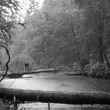


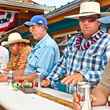



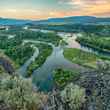


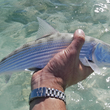
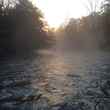



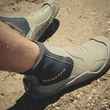




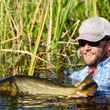
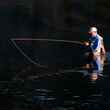



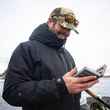
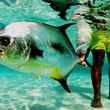
Comments